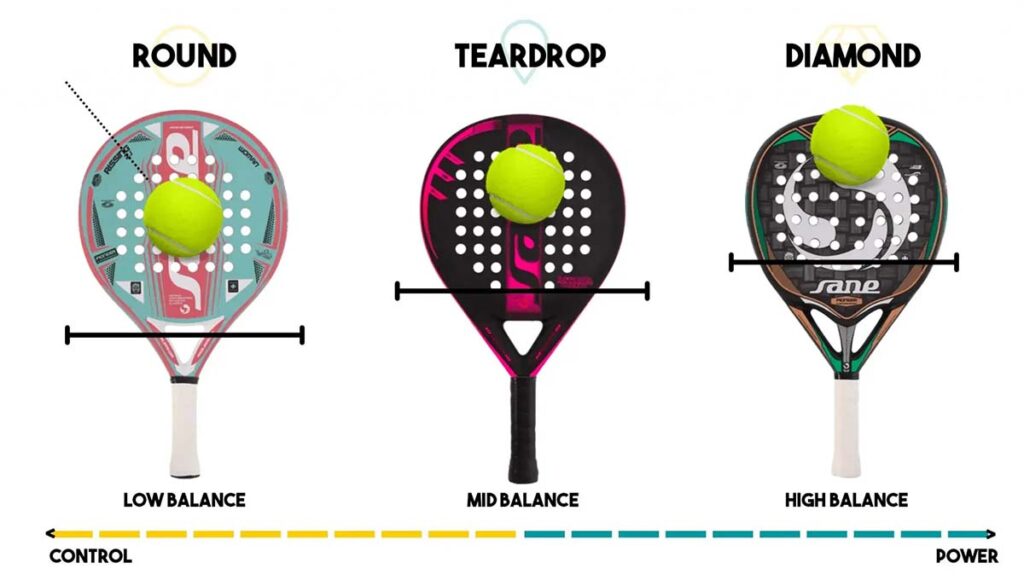1. Padel Racket Shape
Padel rackets come in three main shapes: round, teardrop, and diamond, each suited to different playing styles.
- Round rackets offer the most control, with a large, centered sweet spot—ideal for beginners or intermediate players who value precision and consistency.
- Teardrop rackets strike a balance between power and control, with a slightly higher sweet spot, making them a solid choice for intermediate or all-round players.
- Diamond-shaped rackets provide maximum power with a smaller, top-positioned sweet spot, favored by advanced players with strong technique who play an aggressive, attacking game.

